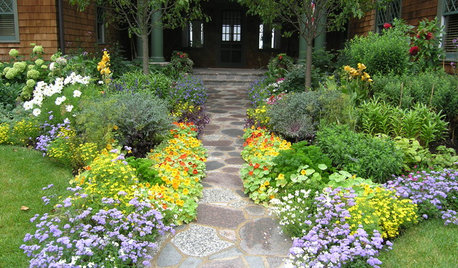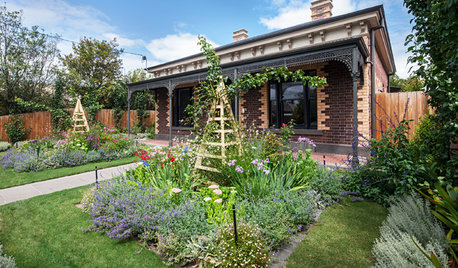Please help! My tomatoes are sick.
markyd
12 years ago
Related Stories

LIFE10 Feel-Better Things to Do on a Sick Day at Home
Nourish, pamper and heal yourself when a cold keeps you housebound, with these restorative ideas
Full Story
EDIBLE GARDENSSummer Crops: How to Grow Tomatoes
Plant tomato seedlings in spring for one of the best tastes of summer, fresh from your backyard
Full Story
LIFEKitchen Traditions: Tomato Season Meets a Family Legacy
Somewhere a Sicilian great-great-grandmother is smiling at a bowl of American-made sauce
Full Story
ARCHITECTUREHouzz Tour: Fresh Ideas in a Former Tomato Packing Shed
A formerly metal-clad structure is now a beautiful wood home designed to capture the light and preserve open space
Full Story
PETS6 Ways to Help Your Dog and Landscape Play Nicely Together
Keep your prized plantings intact and your dog happy too, with this wisdom from an expert gardener and dog guardian
Full Story
HOME OFFICESQuiet, Please! How to Cut Noise Pollution at Home
Leaf blowers, trucks or noisy neighbors driving you berserk? These sound-reduction strategies can help you hush things up
Full Story
SUMMER GARDENINGHouzz Call: Please Show Us Your Summer Garden!
Share pictures of your home and yard this summer — we’d love to feature them in an upcoming story
Full Story
GARDENING GUIDESPathway Plantings That Please the Senses
Add some color, life and intrigue beside your sidewalk with these 7 suggestions
Full Story
EDIBLE GARDENSAn Edible Cottage Garden With a Pleasing Symmetry
The owners of this cottage garden in Australia grow vegetables, herbs and fruit to delight their family and friends
Full Story
KITCHEN DESIGNDesign Dilemma: My Kitchen Needs Help!
See how you can update a kitchen with new countertops, light fixtures, paint and hardware
Full StoryMore Discussions





markydOriginal Author
Okiedawn OK Zone 7
Related Professionals
Lyons Landscape Architects & Landscape Designers · Edmond Landscape Contractors · Middletown Landscape Contractors · Methuen Landscape Contractors · Selden Landscape Contractors · Raytown Landscape Contractors · Asheville Decks, Patios & Outdoor Enclosures · Aventura Decks, Patios & Outdoor Enclosures · Boise Decks, Patios & Outdoor Enclosures · Fort Worth Decks, Patios & Outdoor Enclosures · Littleton Decks, Patios & Outdoor Enclosures · Montgomery County Decks, Patios & Outdoor Enclosures · Portage Decks, Patios & Outdoor Enclosures · Puyallup Decks, Patios & Outdoor Enclosures · Wentzville Decks, Patios & Outdoor Enclosureselkwc
elkwc
markydOriginal Author
markydOriginal Author
piscesfish
elkwc
Okiedawn OK Zone 7
chickencoupe
elkwc
Okiedawn OK Zone 7
Okiedawn OK Zone 7
elkwc
Erod1
Okiedawn OK Zone 7